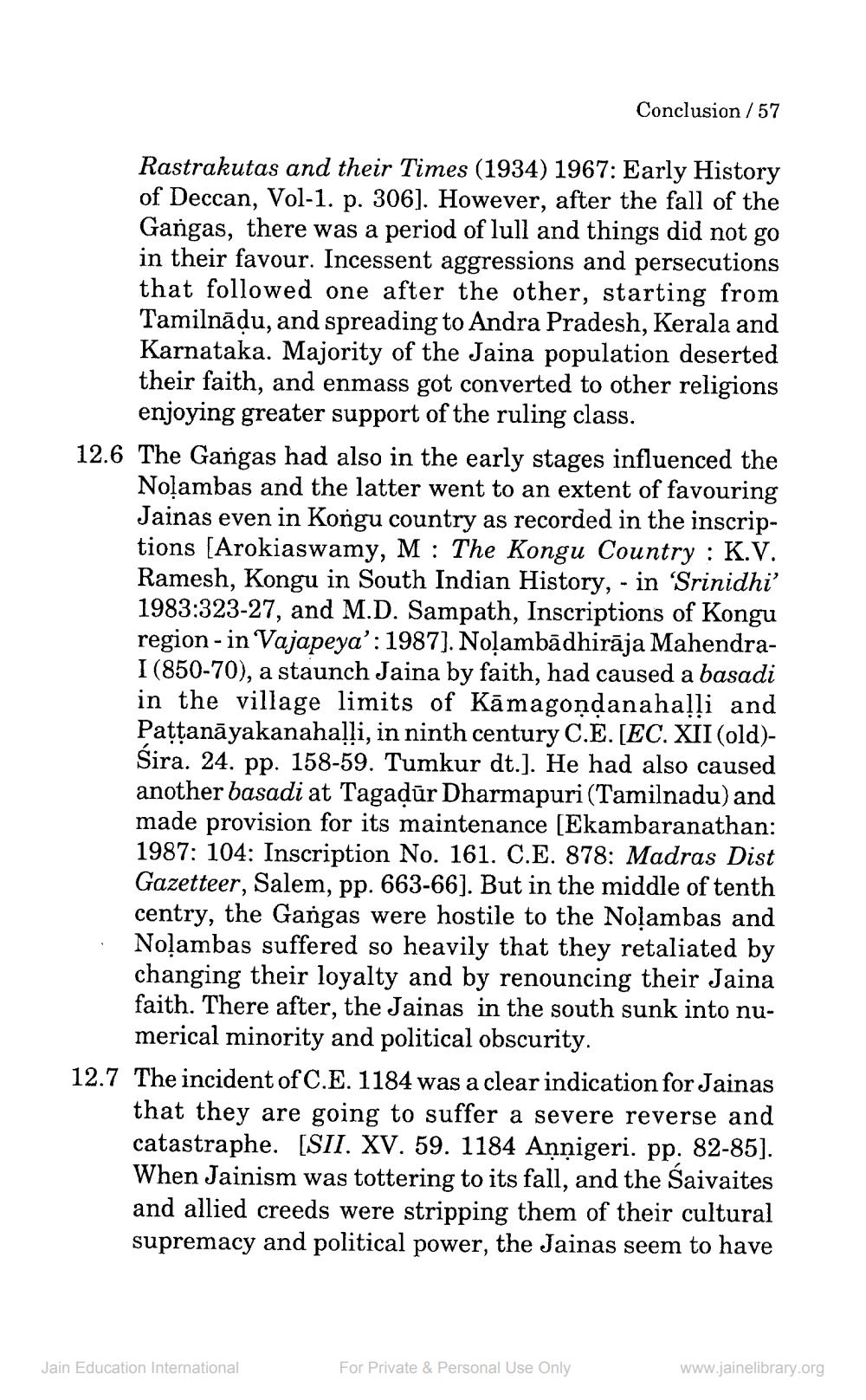________________
Conclusion / 57
Rastrakutas and their Times (1934) 1967: Early History of Deccan, Vol-1. p. 306]. However, after the fall of the Gangas, there was a period of lull and things did not go in their favour. Incessent aggressions and persecutions that followed one after the other, starting from Tamilnādu, and spreading to Andra Pradesh, Kerala and Karnataka. Majority of the Jaina population deserted their faith, and enmass got converted to other religions
enjoying greater support of the ruling class. 12.6 The Gangas had also in the early stages influenced the
Noļambas and the latter went to an extent of favouring Jainas even in Kongu country as recorded in the inscriptions (Arokiaswamy, M: The Kongu Country : K.V. Ramesh, Kongu in South Indian History, - in Srinidhi' 1983:323-27, and M.D. Sampath, Inscriptions of Kongu region - in Vajapeya’: 1987]. Noļambādhirāja MahendraI(850-70), a staunch Jaina by faith, had caused a basadi in the village limits of Kāmagondanahalli and Pattanāyakanahalli, in ninth century C.E. [EC. XII (old)Sira. 24. pp. 158-59. Tumkur dt.]. He had also caused another basadi at TagaŅūr Dharmapuri (Tamilnadu) and made provision for its maintenance (Ekambaranathan: 1987: 104: Inscription No. 161. C.E. 878: Madras Dist Gazetteer, Salem, pp. 663-66). But in the middle of tenth centry, the Gangas were hostile to the Nolambas and Nolambas suffered so heavily that they retaliated by changing their loyalty and by renouncing their Jaina faith. There after, the Jainas in the south sunk into nu
merical minority and political obscurity. 12.7 The incident of C.E. 1184 was a clear indication for Jainas
that they are going to suffer a severe reverse and catastraphe. [SII. XV. 59. 1184 Annigeri. pp. 82-85). When Jainism was tottering to its fall, and the Saivaites and allied creeds were stripping them of their cultural supremacy and political power, the Jainas seem to have
Jain Education International
For Private & Personal Use Only
www.jainelibrary.org




